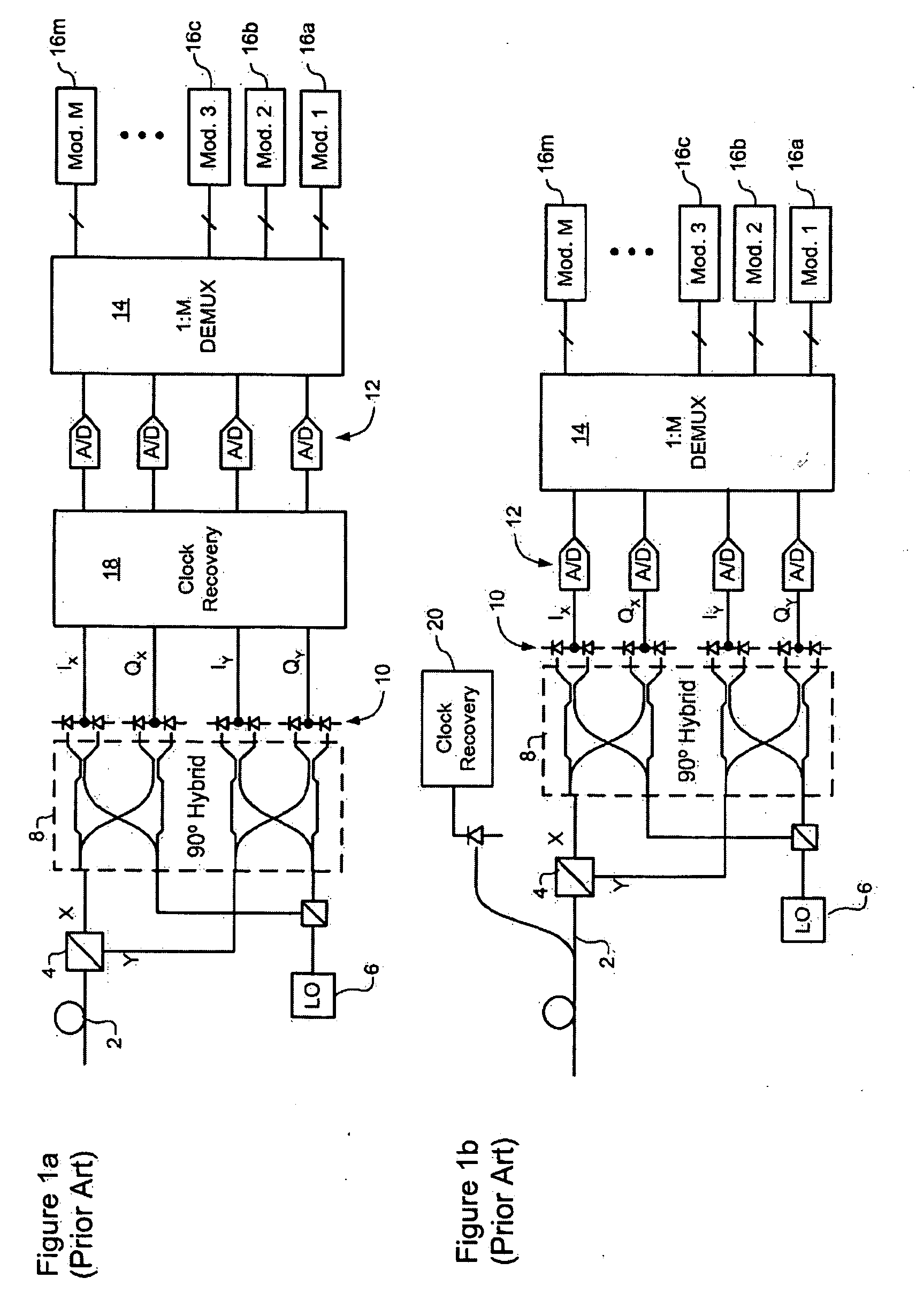Clock recovery from an optical signal with polarization impairments
a clock signal and impairment technology, applied in the field of optical communication networks, can solve the problems of inability to provide a reliable communication link, system extremely sensitive to polarization impairment, and vulnerable to severe chromatic dispersion and polarization impairmen
- Summary
- Abstract
- Description
- Claims
- Application Information
AI Technical Summary
Benefits of technology
Problems solved by technology
Method used
Image
Examples
Embodiment Construction
[0027] The present invention provides methods and systems enabling clock recovery from a highly distorted optical signal. Embodiments of the invention are described below, by way of example only, with reference to FIGS. 2-8.
[0028] In general, the present invention provides a clock recovery circuit in which a multi-bit sample stream of a received optical signal is digitally processed to compensate dispersion and / or polarization, an a clock signal recovered from the resulting compensated signal. It should be noted that in all cases the methods presented herein are “real-time”, in that the clock is recovered during reception of the optical signal, so that the recovered clock can be used to control the optical receiver, for example. This contrasts with typical laboratory bench-top systems, in which samples of an optical signal are stored for later processing, for example using an oscilloscope, to extract clock information.
[0029] Various methods may be used to recover a clock from a co...
PUM
 Login to View More
Login to View More Abstract
Description
Claims
Application Information
 Login to View More
Login to View More - R&D
- Intellectual Property
- Life Sciences
- Materials
- Tech Scout
- Unparalleled Data Quality
- Higher Quality Content
- 60% Fewer Hallucinations
Browse by: Latest US Patents, China's latest patents, Technical Efficacy Thesaurus, Application Domain, Technology Topic, Popular Technical Reports.
© 2025 PatSnap. All rights reserved.Legal|Privacy policy|Modern Slavery Act Transparency Statement|Sitemap|About US| Contact US: help@patsnap.com



